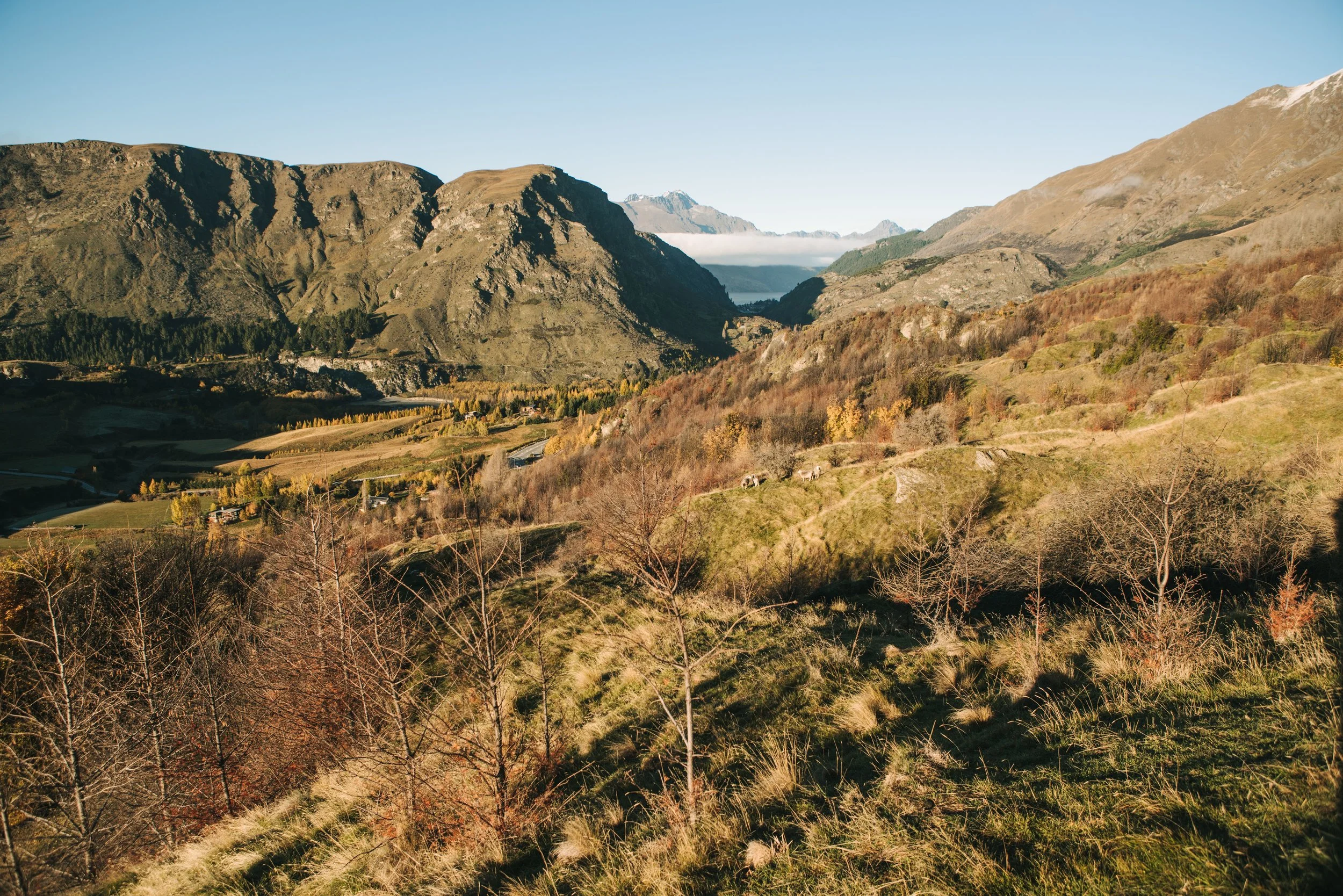Treespace - an environmental enterprise
Environmental enterprise Treespace has deferred its resource consent application while it gathers more material to satisfy Queenstown Lakes District Council concerns around the subdivision code, landscape visual effects and how well plants will grow on Mt Dewar.
The application covers the building of 53 mountain side homes - most of them on tiny 100 sq metre sites, and a few on 625 sq metre sections. A lodge building will provide short-stay tourist accommodation and amenities for residents.
The Treespace site on Mt Dewar.
But what makes this project special is the goal of restoring 99% of the ecosystem through large-scale replanting of the native beech forest.
“In this development the forest takes precedent and the buildings have to exist within that nature dominated environment,” founder Adam Smith told Landscape Architecture Aotearoa. “Our objective is to change the landscape to revert to original indigenous forest.”
The site will be returned to native beech forest
Cards on the table though - he’s a property developer not a philanthropist so of course he and his business partner, restaurateur Sam Chapman, are ensuring its economically viable.
“It’s unabashedly an environmental enterprise,” Smith says. “The idea being that people can get a return on their capital from carrying out large scale environmental regeneration and rehabilitation. So as part of the whole process the people that put up the risk money to acquire the land ($10 million) in the first place get a return on their capital.”
They get that money back through the sale of the real estate. Smaller sites in the alpine village will go for around $350,000 each, with building costs on top. The larger sections will have price tags of between $1.2 million and $1.5 million.
Getting the development even this far has been a massive undertaking, with Treespace using the latest technology to assess the site for planting. Mt Dewar Station is 1,760 hectares of unproductive high country farmland, with the summit sitting at 1310 metres. The viable planting area is up to 650 metres above sea level.
“We started off with the world’s leading drone planting company, which is based in the UK,” Smith says. “We flew them out about two years ago to survey the property, analyse it and come up with a strategy.
The public will also have access to surrounding trails.
“They drone plant seeds. Drone planting - it really is the future of large scale reforestation. The cost and time involved in hand planting individual trees is quite prohibitive when you are talking about the amount of native forest that you need to put back on the planet to help balance some things out.”
The company - Biocarbon Engineering - has several different methods of planting. One is a cheaper version of seed scattering, where seeds are scattered from a low hover height. Another is developing a nutrient package for each seed which is encapsulated in a gel capsule. It has everything the seed needs to germinate and includes a pest repellant of organic substances like chilli.
Biocarbon Engineering’s survey helped determine which plant species will thrive and what weeds are growing where, as well as doing pest and animal counts.
Smith says Treespace will also use more traditional, proven methods of surveying and planting. “The use of the new technologies are being used to enhance what we already know works,” he said.
Higher country will be retained in tussock and native grasses.
And for those who miss out on living in the alpine forest community, there’ll still be a chance to enjoy the natural beauty. Over 50 kilometres of hiking and biking trails will be publicly accessible.



